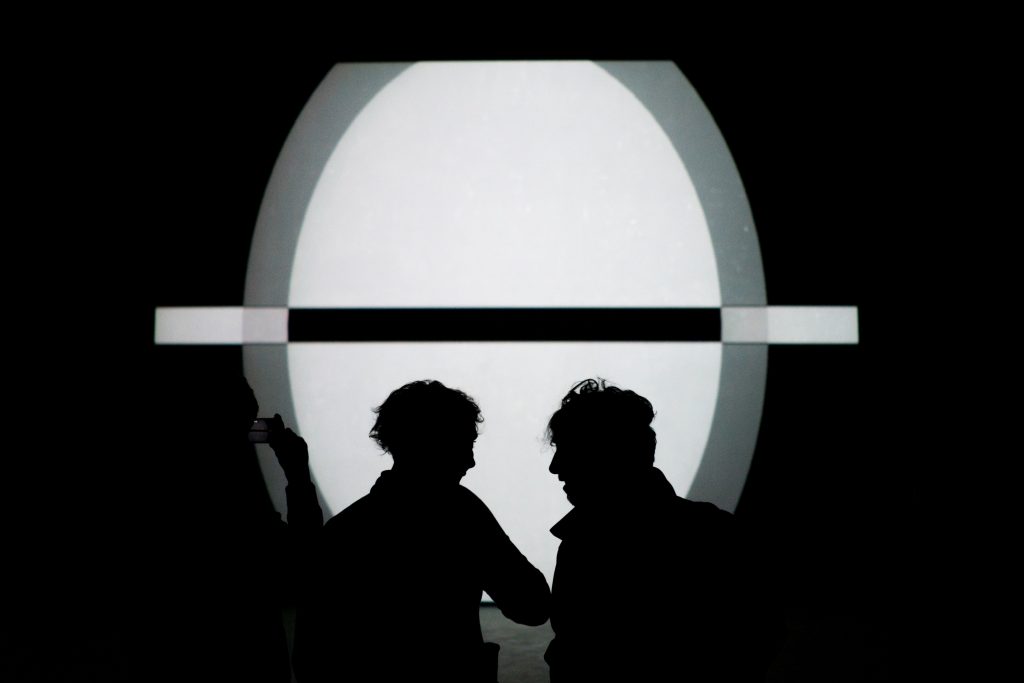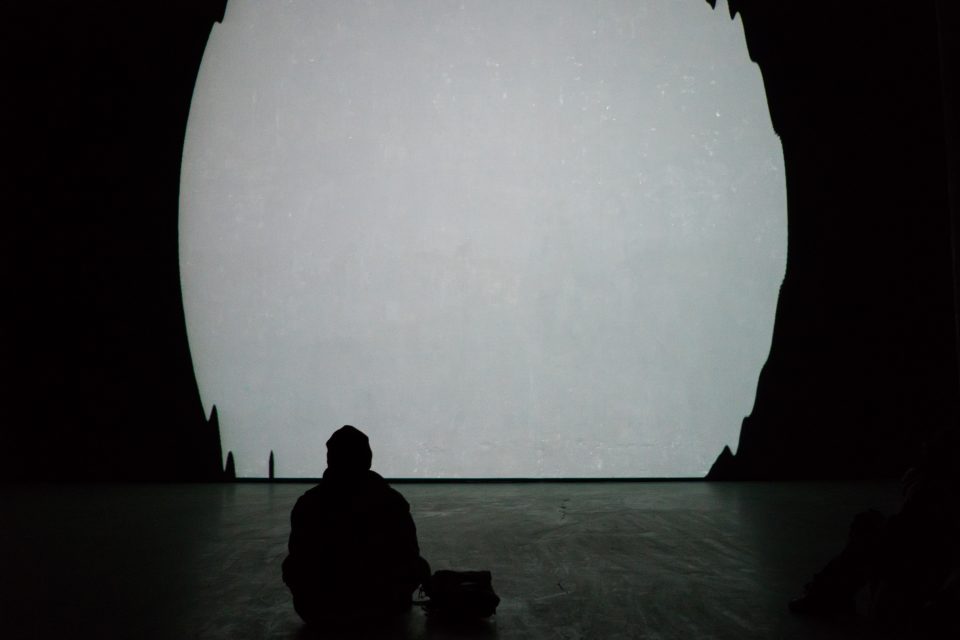Jonathan Mikkelsen
Jonathan Mikkelsen is audio and visual artist from Denmark with an interest in technology and sensory experience.
I saw you live at the Delta Wave festival in Antwerp and I really enjoyed it; it was loud and it was very minimalistic, but I had no idea what I was looking at. So could you explain to me: what is it what you do when you play live?
What you saw in Antwerp was a second edition of a work I did for the opening of an exhibition in W139 in Amsterdam. It was the only work presented at the opening and it filled the entire space for 8 hours straight.
What is the link between the audio and the visual?
I’ve always been fascinated with linking audio to visual and this work in particular was an experiment in having both the audio controlling visual elements and also having visual elements controlling the audio.
The complete setup for the work is quite complex, but I will try and explain it briefly. Basically the whole system was controlled by 4 LFO’s (Low-frequency oscillation) running at different speeds and controlling both the audio and the visual elements.

What is your audio input? Is it an analog synth?
It was an analog synth playing one note, with the synths LFO controlling the volume. The volume of that synth controlled the size of the white circle. At the same time part of the visuals were controlled by another LFO that also controlled the filter of the synth, which in return affected the volume that then affected the visuals… in short the audio was controlled by LFO’s that affected the visuals and the visuals was controlled by LFO’s that affected the audio. I would then slowly tweak the parameters and play around with the composition ever so slightly. I didn’t want to make it into a performance, and in Amsterdam I would adjust the parameters incognito from my phone and occasionally turn a knob on the synth. It was meant as an installation where people could stay as long as they felt like, which worked great for the opening in Amsterdam, so I was a bit concerned how it would work in the framework of a music/sound festival like Delta~Wave. I changed the setup a bit and added another synth and took out a drum sound, and in the end kept it even more minimal than the first edition, which I think improved the work a lot. In order to make it as less of a performance as possible I hid myself and the equipment, but in the end everyone knew exactly where I was. For my next show I will try it as an actual music performance, keeping it completely in a context of music.
“I primarily think in shapes and movement… and sound.”
Why do you prefer the minimal approach, both in your sounds and in your visuals?
Minimalism is something really pure to me, if you can distill your work into just one or two elements and it’s still interesting it’s beautiful to me. But I find it really hard to be minimal. There is a constant fear that it becomes boring if nothing happens. But more often than not the opposite is true I think. I’m still not good at it though.

Why do you prefer working with mainly black and white?
For some reason I almost always work in black and white. I don’t think in color, I primarily think in shapes and movement… and sound.
Do you see yourself as a musician? Or as a visual artist? Or as a sound artist? Or more as an investigator?
All of the above basically. Maybe less as a visual artist actually. But I don’t really like to label myself to be honest.
For how long have you been doing this?
I’ve been in multiple music projects over the years since 2009, some more experimental than others. I’ve been working with 3D/2D animation for a long time.
How did you get into this kind of work?
I was in art school where I primarily focused on installation art and soundscapes, so it sort of makes sense that I try and combine all of these things in my work.
– Joeri Bruyninckx
Headline photo: W139. Photographer: Chun-Han Chiang. All credit: Jonathan Mikkelsen



